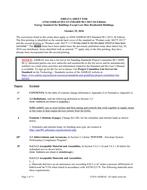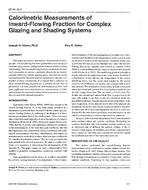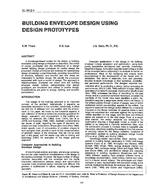Much work has been done in the last decade on the determination of exterior loading conditions including rainfall. These methods are generally geared for heat, air, and moisture (HAM) modeling and involve selecting a “reference year.†Whereas the real climate of the reference year can be followed in simulations, the loading has to be simplified in an experiment. To set deterministic or quasi-stochastic loads for experimental testing, the climatic variables can be statistically analyzed. However, the reference year does not provide information in terms of wind-driven rain infiltration loading. As well, since in an experiment the water must be inserted physically, two more steps are required to determine the load conditions: the water insertion rate must be established as well as the method of water introduction. This paper presents various existing methods for selecting a climate-representative reference year and their limited applicability for experimental testing. Methods to determine the impinging wind-driven rain on building facades are discussed, as well as previous work on wind-driven rain infiltration and methods used for the experimental simulation of wind-driven rain infiltration. The findings from the literature review show that there is a need for the development of a methodology to simulate wind-driven rain infiltration that takes into consideration climatic variables, such as rainfall and wind speed, as well as building geometry, location on a façade, and an estimate of wind-driven rain infiltration rates in the context of building envelope testing.
Units: Dual
Citation: ASHRAE Transactions, vol. 111, pt. 2, Denver 2005
Product Details
- Published:
- 2005
- Number of Pages:
- 13
- File Size:
- 1 file , 540 KB
- Product Code(s):
- D-27026


